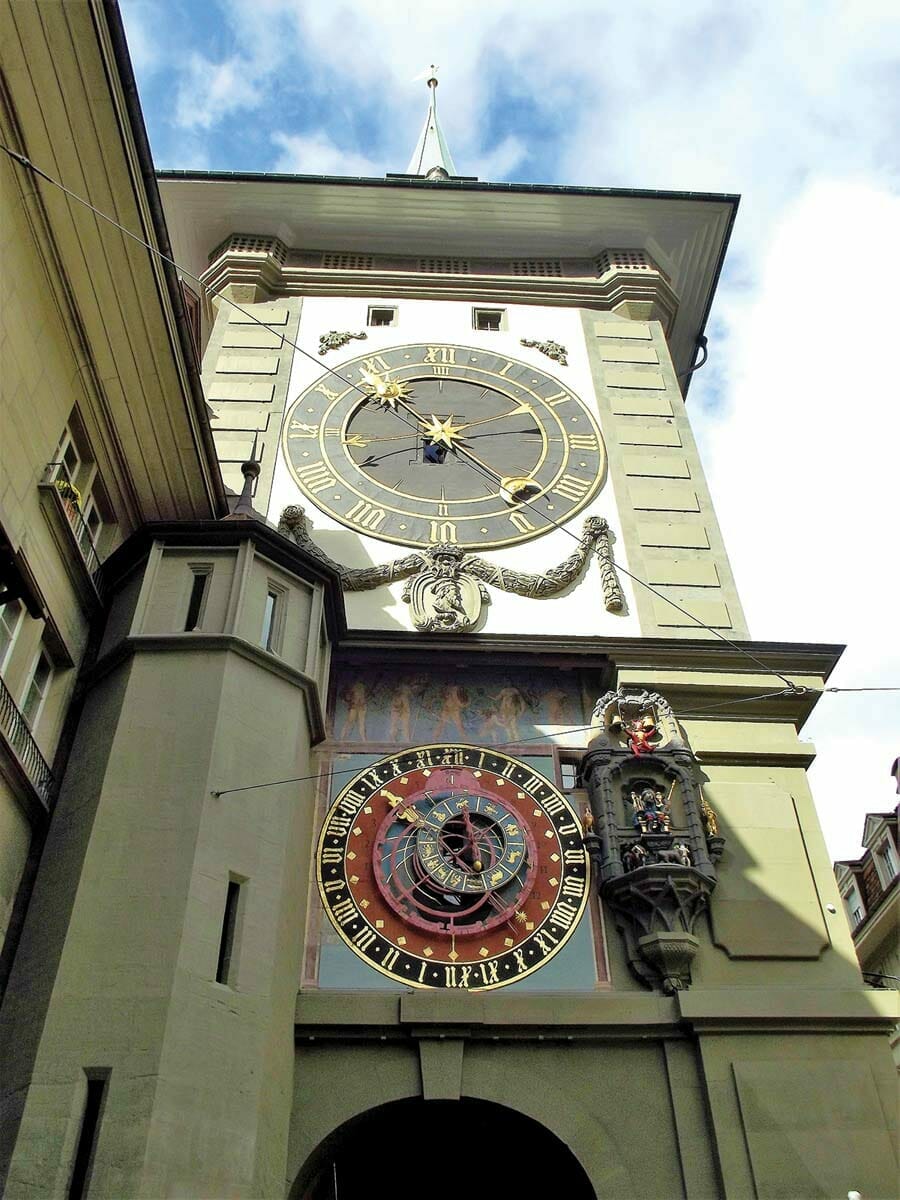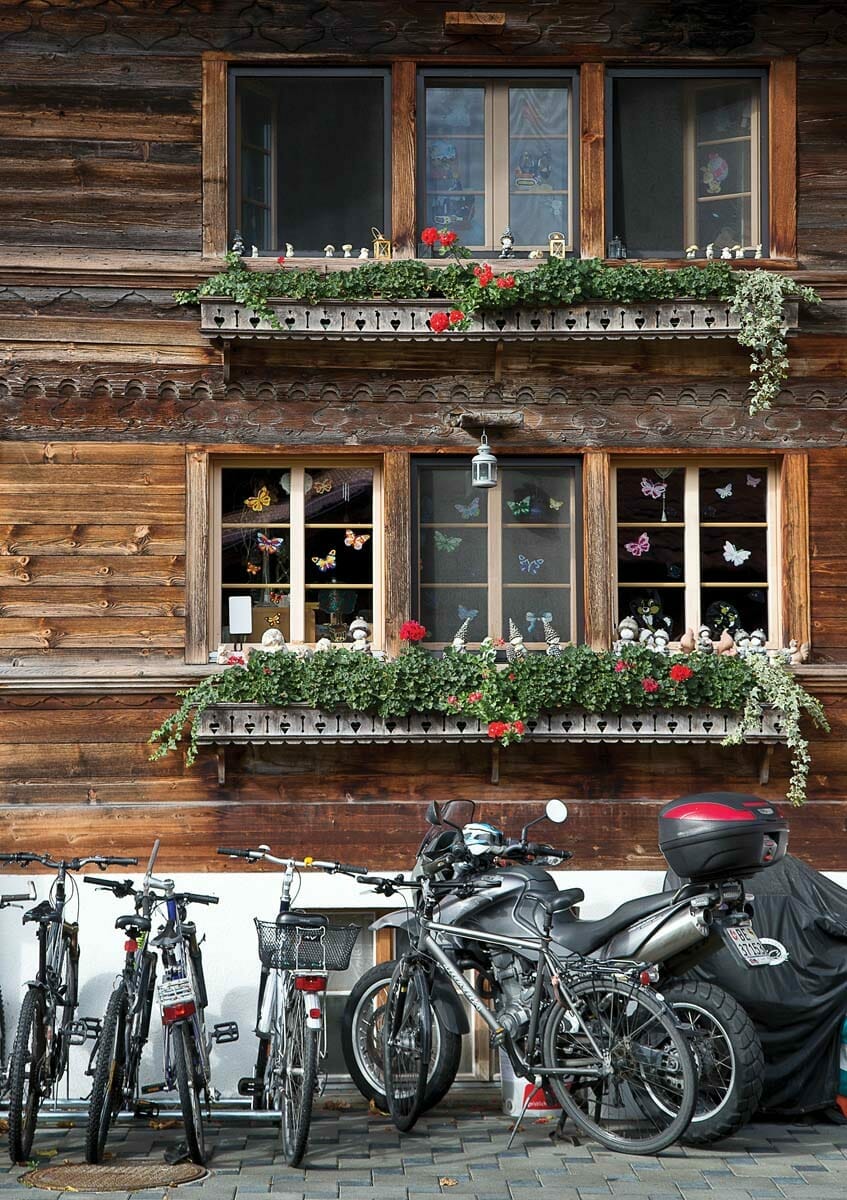
By Irene Middleman Thomas
Photos by Irene Middleman Thomas
Enjoying an enormous hazelnut gelato at a sidewalk cafe in a piazza — followed by a steaming macchiato — I watch passers-by and admire the view across misty Lake Maggiore. But I am not in Italy. I’m in Switzerland, gazing across the lake at Italy.
The next day, I board a train to a welcoming buongiorno and, just an hour or so away, I hear the conductor’s merci beaucoup as I glimpse signs for baguettes and croissants in bakery windows. I have arrived in the part of Switzerland where French is the language of choice. Days later, I dine on bratwurst and schnitzel in the German-speaking region of the country. But no matter where I wake up, my morning meal is muesli, the beloved Swiss breakfast cereal.
Europe beckons adventurous travelers with its history, beauty, architecture, cuisine and close proximity of one nation to another. Switzerland calls out with its renowned Alps, cheese fondue, cuckoo clocks and cowbells, but it is actually a land with four distinct cultures.
Switzerland borders France to the west, Germany to the north, Austria and Liechtenstein to the east and Italy to the south. Some 75 percent of the Swiss people mostly use German (actually a dialect of Swiss-German), 20 percent speak mainly French, 4 or so percent use mostly Italian and 1 percent speak Romansh. English is widely spoken in all four regions, and Switzerland is home to a diverse population from all over the world.
The countryside is more than postcard beautiful, with bright green pastures dotted with shaggy cows; towering, craggy, snow-capped mountains; deep and dense forests; pretty stone houses perched on impossibly steep hillsides; endless vineyards; and red tile-roofed villages straight out of Grimm’s fairy tales. Traveling by train, I never once take out a book; I am glued to the window, marveling at the scenery on a journey that takes me to three of the four regions and a trio of my favorite cities. The city’s museums are outstanding, with my “don’t miss” being the International Museum of the Red Cross, which makes for a moving and worthwhile visit. Sunday mornings are perfect for checking out the street market in Carouge, an old neighborhood known as the “Greenwich Village of Geneva.” I also take a short trip to Mont Salève, which is actually in neighboring France but accessed easily on the Geneva city bus system. The cable car there lifts to 3,600 feet in less than five minutes, affording outstanding views across the city to Lake Geneva, the Alps, the Jura chain and Mont Blanc.
BONJOUR
During my three days in Geneva, I meet people from all over and hear just about every language imaginable spoken on the streets. It is perhaps the most French, but definitely the most international, city within Switzerland’s four French-speaking cantons thanks to it being the European seat of the United Nations and home to the international headquarters of the Red Cross (and many other nonprofits).
Located at the southwestern end of Lake Geneva at its junction with the Rhone River, the city’s scenery is beautiful near and far. The Jura Mountains, a range of the Alps, loom in the distance. Elegant swans glide atop the lake and on the river; in warm weather, locals swim along with them. Year round, residents and visitors alike stroll along the riverbanks and sip cafe au lait at waterfront cafes.
The capital of Switzerland’s expert watchmaking industry, Geneva is filled with shops offering timepieces from Patek Philippe and Breitling, among others. There’s also a staggering array of designer boutiques along the car-free cobblestone streets and squares like the Place du Molard, where some cobblestones have been replaced with backlit resin “stones” with multilingual greetings on them. At night, they light up the streets, a delight for those who dine in the many cafes there.
GRÜEZI
In Bern, speaking French is fine, but speaking Schweizerdeutsch, or “Swiss German,” is best. This picturesque city is the gateway to the Alps and the seat of the Swiss federal authority, known as the Bundesstadt, or “federal city.” The houses of Parliament are open to visitors most of the time, and it’s not unusual to bump into a member in the streets of the city. Many ride bicycles to work or take the bus.
Along with the many elaborate fountains (yes, the water is safe to drink), cobblestone streets and historic buildings, the mind-boggling 13th– and 16th-century Zytglogge, or “clock tower,” is a standout. On the hour, people gather to watch the clock’s cogwheel mechanism (still wound by hand) perform its intricate spectacle. The tower is located in the exquisite medieval Old Town of Bern, a UNESCO World Heritage Site with covered shopping arcades and untouched history.
The city’s cultural side offers a host of excellent museums, including the Paul Klee Center, designed by architect Renzo Piano to celebrate the famed artist and his work, and the Einstein House, where the physicist developed his theory of relativity. And of course there are the famous Bern bears, which live in a downtown park.
BUONGIORNO
Just a day trip away from Bern is some of the country’s most breathtaking scenery: lakes, mountains and stunning landscapes. Ascona, one of the most popular towns in Ticino, the only Italian-speaking canton, is delightful. The destination is a favorite of Swiss Germans, who flock here for its mild climate and “Bella Italia” ambiance and cuisine. Indeed, many prefer it to the more famous Lake Como, as it is less crowded and less expensive, but equally beautiful.
On the southern tip of Switzerland, Lake Maggiore runs through the border between Switzerland and Italy. The canton of Ticino has fewer than 400,000 residents, three-quarters of whom speak Italian as their mother tongue. Here, flowers spill from every window box, “Ticino plates” of salamis and local cheeses are offered in rustic mountain hut cafes, sunbathers lie on chaise lounges at glamorous waterside resorts. At dusk, everyone strolls the palm-tree-lined pedestrian promenade on the lakefront to see and be seen. Gelaterias are everywhere, as are sidewalk cafes. I take a small launch to the Brissago Islands, about 15 minutes from the lakefront, where a lush public garden is home to some 1,700 different species of plants from five continents. If you go in June or July, you might want to attend JazzAscona, promoted as Europe’s largest jazz festival. An aside: It’s the only festival outside the U.S. that is officially supported by the city of New Orleans.
Stay at the famed Hotel Eden Roc, the splendid, resort-style lakefront hotel with two huge swimming pools, piers with a variety of boats, several restaurants and expansive gardens.
It sits just steps from the Ascona piazza, but you’ll feel a world away from everyday life. It’s the perfect way to wrap up your trip and say farewell — in whichever language you choose — to Switzerland.




